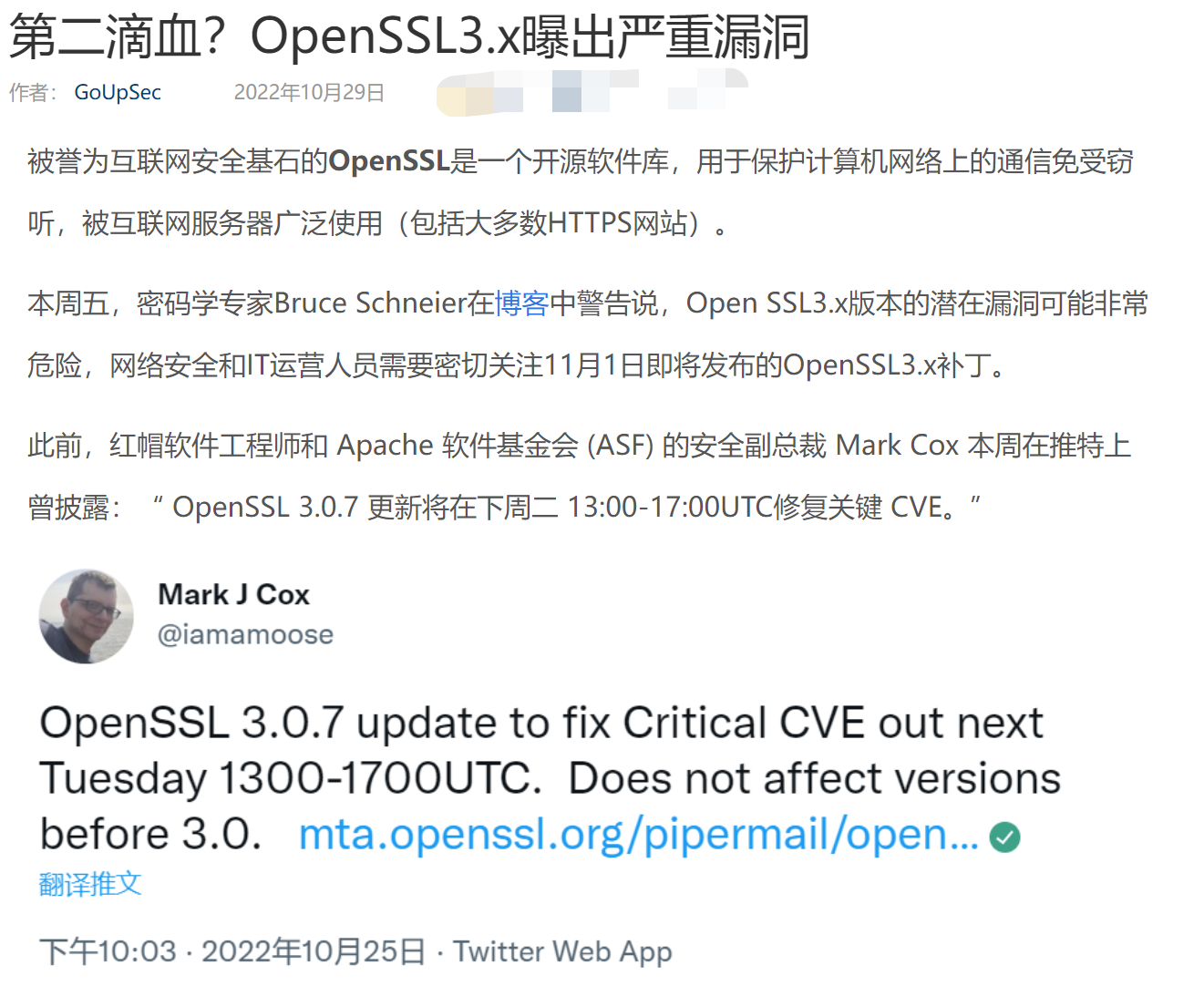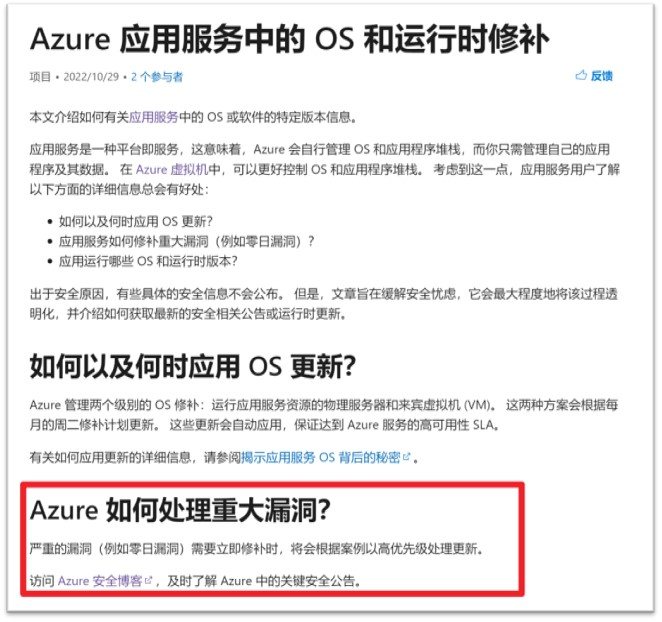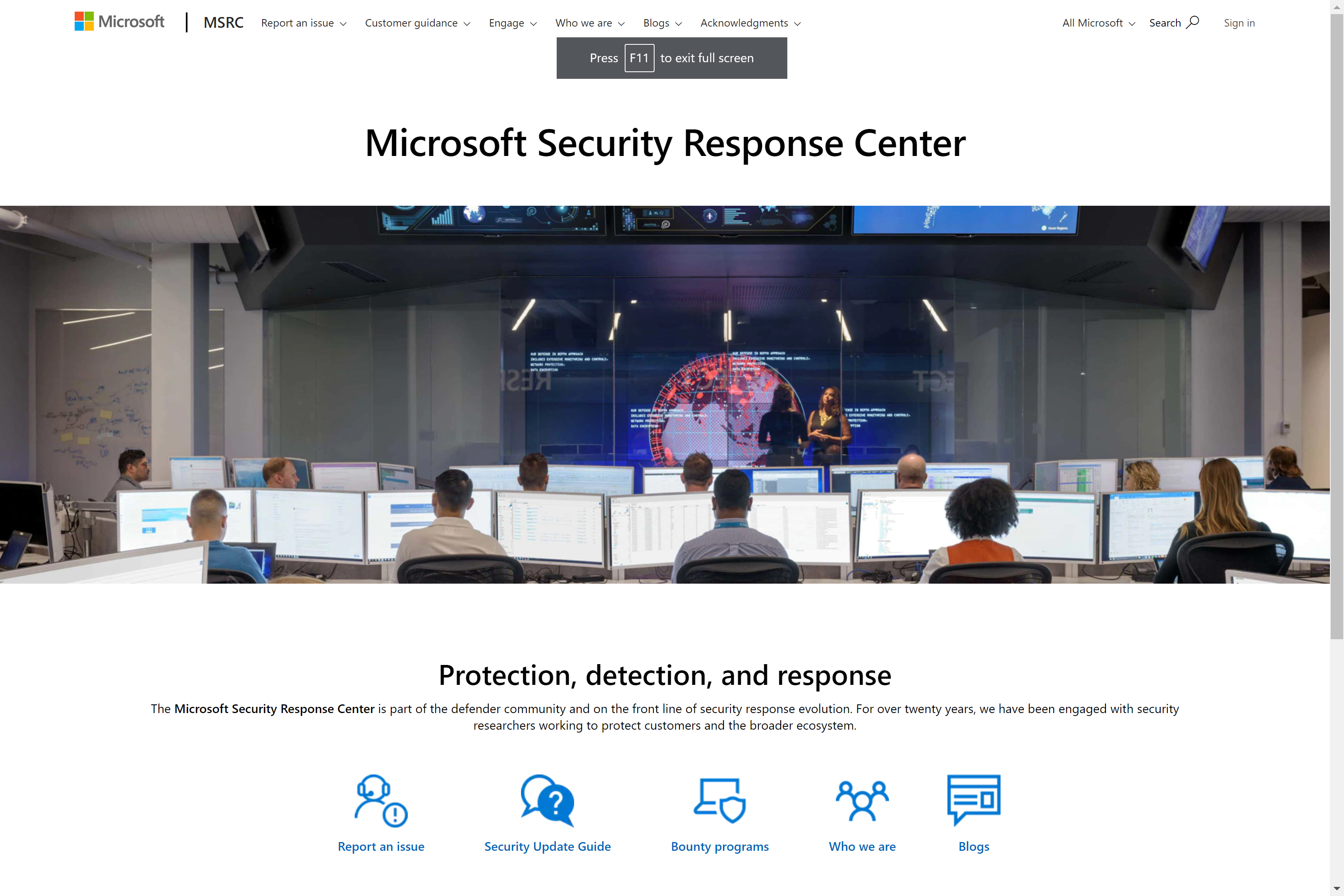【Azure 环境】Azure 云环境对于OpenSSL 3.x 的严重漏洞(CVE-2022-3602 和 CVE-2022-3786)的处理公告
问题描述
引用报告:(OpenSSL3.x曝出严重漏洞 : https://www.ctocio.com/ccnews/37529.html )

最近OpenSSL 3.x 爆出了严重安全漏洞,分别是 CVE-2022-3602 和 CVE-2022-3786.
| CVE-2022-3602 |
缓冲区溢出可以在 X.509 证书验证中触发,特别是在名称约束检查中。 请注意,这发生在证书链签名验证之后,并且要求 CA 已对恶意证书进行签名,或者要求应用程序继续证书验证,尽管无法构造指向受信任颁发者的路径。 CVE-2022-3602 的预公告将此问题描述为“严重”。基于上述一些缓解因素的进一步分析导致其降级为HIGH。我们仍鼓励用户尽快升级到新版本。 在 TLS 客户端中,可以通过连接到恶意服务器来触发此操作。 在 TLS 服务器中,如果服务器请求客户端身份验证并且恶意客户端连接,则可以触发此操作。 在 OpenSSL 3.0.7 中修复(受影响的 3.0.0、3.0.1、3.0.2、3.0.3、3.0.4、3.0.5、3.0.6)。
|
| CVE-2022-3786 |
缓冲区溢出可以在 X.509 证书验证中触发,特别是在名称约束检查中。 在 TLS 客户端中,可以通过连接到恶意服务器来触发此操作。 在 TLS 服务器中,如果服务器请求客户端身份验证并且恶意客户端连接,则可以触发此操作。
|
OpenSSL 3.0.7 在2022-11-01发布,并将修复以上两个严重漏洞。 那么,微软云如何来处理 OpenSSL 的漏洞事件呢?
问题解答
首先微软的 MSRC团队会随时关注网络世界的最新安全信息 ( Microsoft Security Response Center), 并且及时发布最新的公告:
针对 CVE-2022-3602 和 CVE-2022-3786 两个严重的漏洞,微软安全响应中心(MSRC)公布了对漏洞的更新:
https://msrc.microsoft.com/update-guide/vulnerability/CVE-2022-3602
https://msrc.microsoft.com/update-guide/vulnerability/CVE-2022-3786
Awareness and guidance related to OpenSSL 3.0 – 3.0.6 risk (CVE-2022-3786 and CVE-2202-3602) / 与 OpenSSL 3.0 – 3.0.6 风险相关的意识和指南(CVE-2022-3786 和 CVE-2202-3602):https://msrc-blog.microsoft.com/2022/11/02/microsoft-guidance-related-to-openssl-risk-cve-2022-3786-and-cve-2202-3602/
- Microsoft 已意识到并积极解决与 2022 年 10 月 25 日宣布的最新 OpenSSL 漏洞相关的影响,该漏洞已在 3.0.7 版中修复。作为标准流程的一部分,我们正在为受影响的服务推出修补程序。
- MSRC博客和我们相关的安全更新指南(CVE-2022-3786 安全更新指南和 CVE-2022-3602 安全更新指南)中将重点介绍所需的任何客户操作。
- 作为最佳实践,建议管理自己环境的客户应用来自 OpenSSL 的最新安全更新。强烈建议客户查看安全更新指南,以查看他们可能需要采取的任何操作。
- == == == == == == == == == == == ==
- OpenSSL 版本 3.0.7 于 2022 年 11 月 1 日正式发布,OpenSSL 将 CVE-2022-3602 的严重等级从严重性降级为高严重性等级。
- OpenSSL 3.0.7 解决了两个漏洞(CVE-2022-3786 和 CVE-2022-3602),这两个漏洞对执行证书验证的系统有拒绝服务影响。
- 攻击者可能将恶意制作的证书发送到客户端或服务器,该客户端或服务器在身份验证过程中分析证书,从而导致崩溃。
- 目前,该漏洞似乎不能可靠地允许远程执行代码,并且不知道是否受到攻击。
微软云对于重大的安全漏洞,会立即采取安全更新:https://docs.azure.cn/zh-cn/app-service/overview-patch-os-runtime#how-does-azure-deal-with-significant-vulnerabilities

最后,如果想知道自己的Azure服务是否收到OpenSSL 3.x 漏洞影响。如App Service 可以在Kudu站点中通过 openssl version 来查看版本信息:

PS: 如上图查看Azure App Service使用的Version为 1.x,不在这次受影响的Version中。
参考文档
第二滴血?OpenSSL3.x曝出严重漏洞: https://www.ctocio.com/ccnews/37529.html
Azure 如何处理重大漏洞?https://docs.azure.cn/zh-cn/app-service/overview-patch-os-runtime#how-does-azure-deal-with-significant-vulnerabilities
Awareness and guidance related to OpenSSL 3.0 – 3.0.6 risk (CVE-2022-3786 and CVE-2202-3602) : https://msrc-blog.microsoft.com/2022/11/02/microsoft-guidance-related-to-openssl-risk-cve-2022-3786-and-cve-2202-3602/
OpenSSL: CVE-2022-3602 X.509 certificate verification buffer overrun : https://msrc.microsoft.com/update-guide/vulnerability/CVE-2022-3602
OpenSSL: CVE-2022-3786 X.509 certificate verification buffer overrun : https://msrc.microsoft.com/update-guide/vulnerability/CVE-2022-3786
当在复杂的环境中面临问题,格物之道需:浊而静之徐清,安以动之徐生。 云中,恰是如此!



 浙公网安备 33010602011771号
浙公网安备 33010602011771号